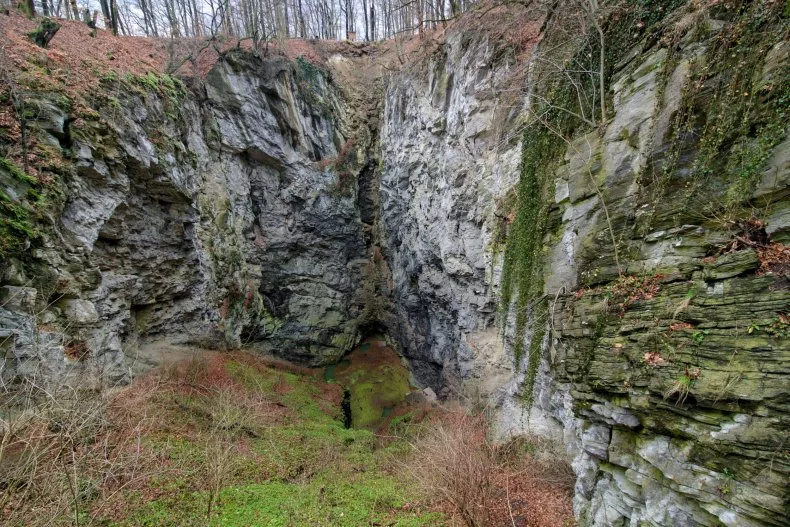The world’s deepest, flooded freshwater sinkhole—the Hranice Abyss in the in the Přerov District in the Olomouc Region—has now measured a little bit deeper, according to new data.
A recent expedition to the cave in the Czech Republic found that it measures at least 1,476 feet deep, according to a press release.
Scientists have previously only guessed at the sinkhole’s depth. The new measurements exceeded previous estimates in 2016, of 1,325 feet under water level. Scientists were able to gauge the actual measurements by using a robot that was lowered into the sinkhole’s depths.
The Hranice Abyss is actually thought to be deeper than this. However, scientists have still not managed to reach the bottom of the sinkhole, due to technology limitations.
During the expedition, scientists also gathered more data on the shape of the hole. From this they were able to draw up a 3D map of its depths, CT24 reported.

A recent expedition to the cave in the Czech Republic found that the Hranice Abyss measures at least 1,476 feet deep. Above, the Hranice Abyss, the biggest freshwater sinkhole in the world.TOMAS INDRAK/GETTY
This was done using a smaller robot, installed with six cameras and sonar beams.
“The most important thing for us is that we managed to create a map backed by data. We can see from it that the Border Gap is one huge hole that leads vertically down; at 450 meters it then begins to turn to the southwest,” Michal Guba, the chairman of the Czech speleological society from the Hranice Abyss, told CT24.
The hole, however, is very difficult to explore. Divers have previously gone inside, however, they struggled with extremely poor visibility, according to a blog post from 2021. They also found that, because the water was highly acidic, it would sting their body that was not protected by a dive suit.
Divers also reported the air just above the water to be unbreathable due to a high carbon dioxide content in the air.
Many logs, bits of foliage and trees have also fallen inside the hole over the years, which means they can occasionally block areas of the cave, making it difficult to explore.
The shape of the hole also makes it difficult to guarantee a divers safety. If a diver were to loose control of buoyancy, they may sink deeper into the hole.
“We focused on exploring the Mikáda restriction at a depth of 200 meters. Everything worked perfectly, so we decided to go beyond this restriction. The spaces we explored and mapped are huge, and at a depth of 450 meters we were stopped by the technical limitations of the underwater robot,” Guba told CT24
Previous studies on the hole have found it was created by groundwater seeping down, rather than it seeping upward—a process called hypogenic formation.
Rather, researchers believe it was formed by water running underground, eroding the base.
-
NEWSLETTER
Subscribe for our daily news











